

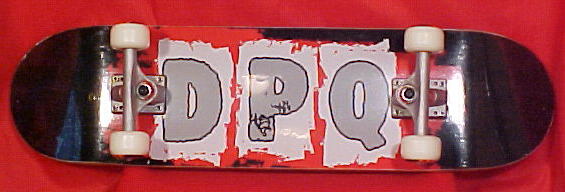
Skateboarding, a young sport of which no one truly knows the origin. Many stories revolve around the invention of skateboarding. Some believe that skating began on the surfing beaches of California, USA in 50's by surfers who put rollerskates on surfboard. At first boarding was known as a type of sidewalk surfing which was done when the waves were to small to go out surfing. The origins of skateboarding are reflected in the design of the earlier skateboards which looked like surfboards. The boards were narrow (4in, 10cm) and much shorter than boards now and the 'sidewalk surfers' from the 50's would ride in bare feet and in more sideways stance than we do today. All they would have been able to do is ride up and down sidewalk and turn by leaning in the direction they wanted to go.
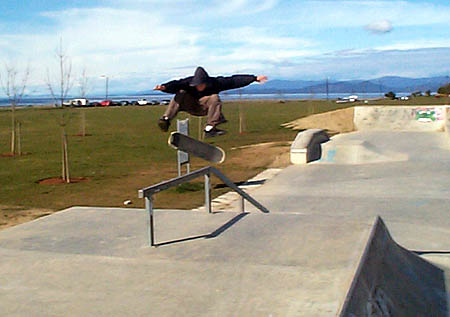
The first manufactured boards came in 1965. They were inch-thick wooden boards, with narrow cast-iron trucks and hard rubber wheels. Soon, races down the sidewalk began to vary and competitions between skateboarders were born: free style, slalom, downhill, high jump and long jump. In the mid-70's skaters started using drainage channels and routes up the slopes around buildings for skateboarding. This opened up the new world of tricks. Skateboarders soon discovered bank skating and they soon were able to manoeuvering their bodies more skillfully. Vert skating then began by using back yard swimming pools. All you needed was a little but of extra speed and you could ride your board up the wall, or so they thought. It was a bit more complicated than that. 1) Pool owners didn't like their swimming pools being used for skateboarding 2) Pools weren't rounded enough. Transitions were to vertical to fast and it would launch them into the air, and even if they could stay on, they would not have enough speed to get up the other side. Skateboarding quickly developed in the US and soon skateparks were built. Pools were built with more rounded sides and then lay-outs for bank and freestylers were built. Until the early eighties, parks were the main hang-out for boarders. Competitions and tournaments were organized for them and soon pool and vert skating became the most popular specialist form of boarding.

Vert skating was most spectacular of the forms. It was incredibly difficult and demanding, which encouraged more changes to be made on the skateboard. The manufacturers built them wider for better stability and changed the old rubber wheels with polyurethane wheels which proved to be faster and had more grip as well. Barefoot skating was now forgotten except by a few of the old die-hard 'sidewalk surfers'. The new skaters figured out that gym shoes had more stability and didn't hurt as bad when you wipe-out. In 1980 skateboarding arrived in Europe, where free style, slalom and high jump became the disciplines of choice. But in both countries it was still considered to be just another craze that would pass so it was not considered to ever be a competitive sport.
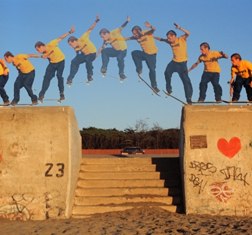
Early eighties arrived with a dive in the skateboarding popularity. It happened almost within a single season. Skateparks closed the doors, manufacturers stopped manufacturing, and worst of all, skateboard magazines switched over to BMXing and rollerskating. But a few hard-core skaters kept on going in both of the continents. Those dedicated skaters advanced skateboarding by creating their own techniques, writing their own magazines, and building some of their own boards and layouts. This was when half-pipes arrived. Simpler and cheaper than pools, they could be built by the skater himself. Half-pipes were usually built of wood and were U-shaped with a ten-foot radius transition on either side with a flat area in the middle, large enough to give you time to concentrate and get speed before hitting the transition. Boarding became unpopular with the public, which in turn pushed the skating scene 'underground'. This might have stifled it but because of the small, but committed group of skateboarder, the sport entered it's most creative stage. Skaters became so envolved with their sport that they wanted nothing else. It was not really a sport, but was becoming a life-style. If not for the commitment of the few, this sport could not have survived the hard times. Skateboarding soon became a mode of transportation. Skaters would go through any and all obstacles in their path. They could, and would, bring their boards anywhere and everywhere. In the early 80's, street skating was born. This new art was free of half-pipes and parks, the skater could DO what he wanted ON what he wanted. Tricks were used in street skating that, before, had only been used by vert skaters. Street ollies, slide'n'rolls, and kerb grinds (most of which have different names now) are classic as street skaters moves, all of which were made by vert skaters.
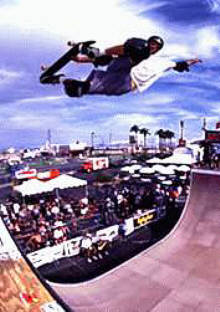
Street skating is still probably one of the most popular forms of boarding. Every skater is a street skater because that's where his roots are from. It's just that some skaters forget a few things along the way.
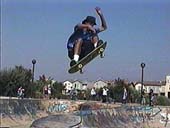
Stolen From:
http://skateboardracer.com/board_history/
